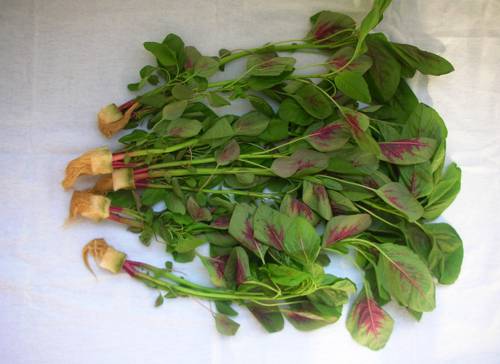
FAQ About Indoor Edible Root Veggie Cultivation

What types of containers are best for indoor root vegetable cultivation?
When cultivating root vegetables like carrots and radishes indoors, it is crucial to select containers that allow enough room for the roots to expand. Deep pots or containers are ideal, typically at least 12-18 inches deep depending on the vegetable. Containers should also have sufficient drainage holes to prevent waterlogging, which can lead to root rot.

How much light do root vegetables need when grown indoors?
Root vegetables require a substantial amount of light to grow properly indoors. Place them in a location that receives at least 6-8 hours of direct sunlight. Alternatively, you can use grow lights to supplement natural sunlight, ensuring they get sufficient light to thrive.

What type of soil is best for growing root vegetables indoors?
The best soil for cultivating root vegetables indoors is a loose, well-draining potting mix. It should be rich in organic matter to provide the necessary nutrients. You can enhance the soil with homemade compost or a balanced fertilizer to improve growth and yield.

How often should indoor root vegetables be watered?
Watering frequency depends on the environment and humidity levels, but generally, root vegetables should be watered when the top 1-2 inches of soil feel dry. It’s important to keep the soil consistently moist but not waterlogged, which can harm the plants.

Can carrots be grown inside an apartment?
Yes, carrots can be grown indoors in an apartment. Ensure you have deep enough containers to accommodate their growth and a spot with ample light. A sunny windowsill or the use of grow lights can help provide the needed light for successful cultivation.

What are the challenges of growing root vegetables indoors?
Some challenges include providing adequate sunlight, choosing the right containers, and avoiding waterlogging. Additionally, indoor temperature fluctuations can impact growth. Careful planning and monitoring are crucial to overcome these challenges.

How can I ensure proper drainage in containers for indoor root vegetables?
To ensure proper drainage, use containers with several drainage holes at the bottom. You can also place a layer of gravel or small stones at the base of the container before adding soil. This helps to facilitate excess water flow and prevents waterlogging.

How long does it typically take for carrots to mature indoors?
Carrots usually take about 70 to 80 days to mature when grown indoors, depending on the variety. Ensure they receive adequate light and consistent care to reach maturity.

Is it necessary to thin seedlings of root vegetables grown indoors?
Yes, thinning is necessary to ensure that each plant has enough room to grow. Overcrowding can lead to smaller root development. Thin seedlings when they are about 2 inches tall, maintaining proper spacing as recommended for each variety.

What are some signs of pests or disease in indoor root vegetables?
Common signs of pests or disease include discolored leaves, wilting, and slowed growth. Look for signs of common indoor pests like aphids or spider mites. Addressing these issues early with natural pesticides or insecticidal soap can help mitigate problems.

Can I grow radishes indoors year-round?
Yes, radishes can be grown indoors year-round as they do well in containers and have a short growing cycle, typically maturing within 30 days. Consistent lighting and temperature control will help in producing radishes all year.

How do I prepare the soil for planting indoor root vegetables?
Start with a clean, high-quality potting mix. You can mix in organic compost or slow-release fertilizers to enrich the soil. Ensure the soil is loose and well-aerated to facilitate root growth and provide easy drainage.

What variety of carrots are best for indoor cultivation?
Shorter carrot varieties are best for indoor cultivation. Varieties like "Thumbelina" or "Paris Market" are ideal due to their small size, which makes them suitable for container planting and ensures successful root development indoors.

Can root vegetables grown indoors be transplanted outside?
While it's possible to transplant indoor-grown root vegetables outside, it’s often not recommended because root systems can be easily damaged. If necessary, ensure the outdoor soil conditions match the indoor environment to reduce transplant shock.

How do I ensure my indoor-grown root vegetables are nutritious?
To maintain their nutritional value, ensure the soil is rich in organic matter and add fertilizers as needed. Proper lighting and watering also play vital roles in developing nutrient-rich vegetables.

Can I use regular garden soil for indoor root vegetable cultivation?
It’s not recommended to use regular garden soil indoors, as it can compact and provide poor drainage, leading to root problems. Instead, use a specially formulated potting mix designed for container gardening.

How can I control humidity for indoor root vegetable growth?
Maintain a moderate humidity level by ensuring good air circulation and occasionally misting plants. Using a humidifier can help in particularly dry conditions, but ensure it does not lead to overly moist soil.

What are some ideal radish varieties for indoor growing?
Radish varieties like "Cherry Belle" or "French Breakfast" are excellent choices for indoor cultivation due to their compact size and quick growth cycle, usually ready for harvest within 30 days.

Is it possible to grow root vegetables indoors without soil?
Yes, root vegetables can be grown using hydroponic systems, which allow plants to receive nutrients from a water-based solution. This method requires a setup that maintains adequate support and nutrients for root development.

What temperature range is optimal for indoor root vegetable growth?
The optimal temperature range for growing root vegetables indoors is between 60°F and 75°F (15°C to 24°C). Consistent temperatures within this range will support steady growth.
